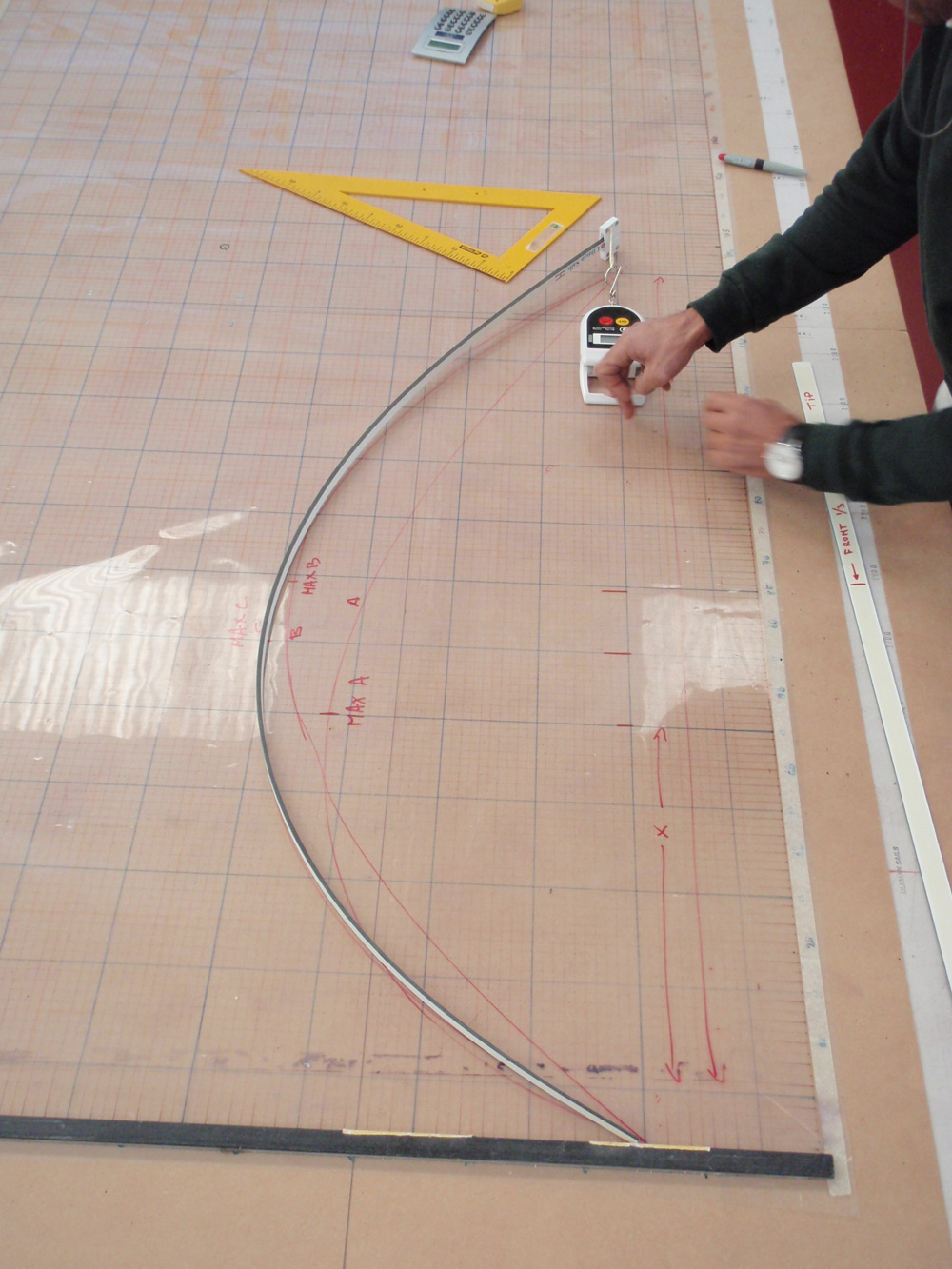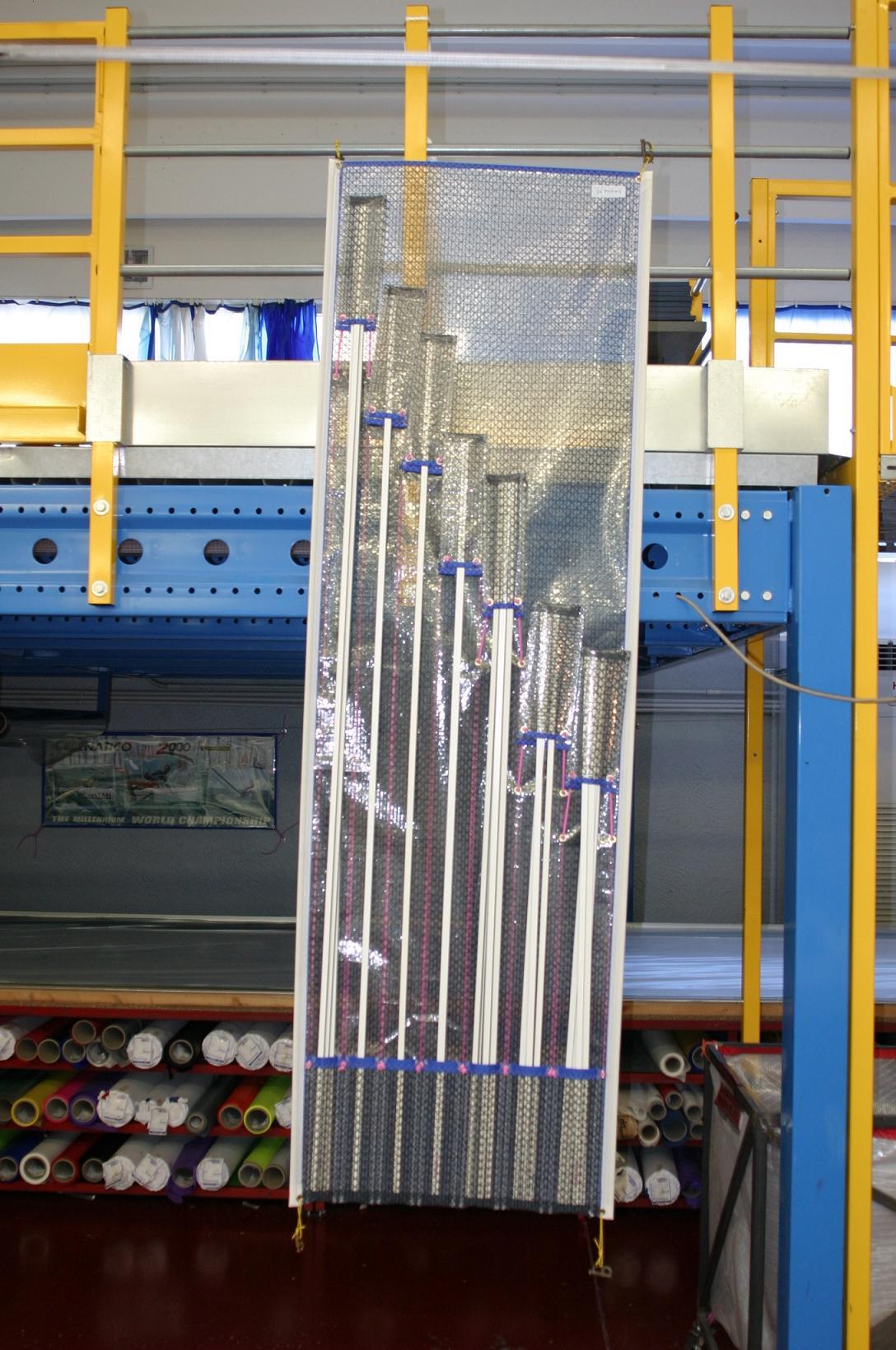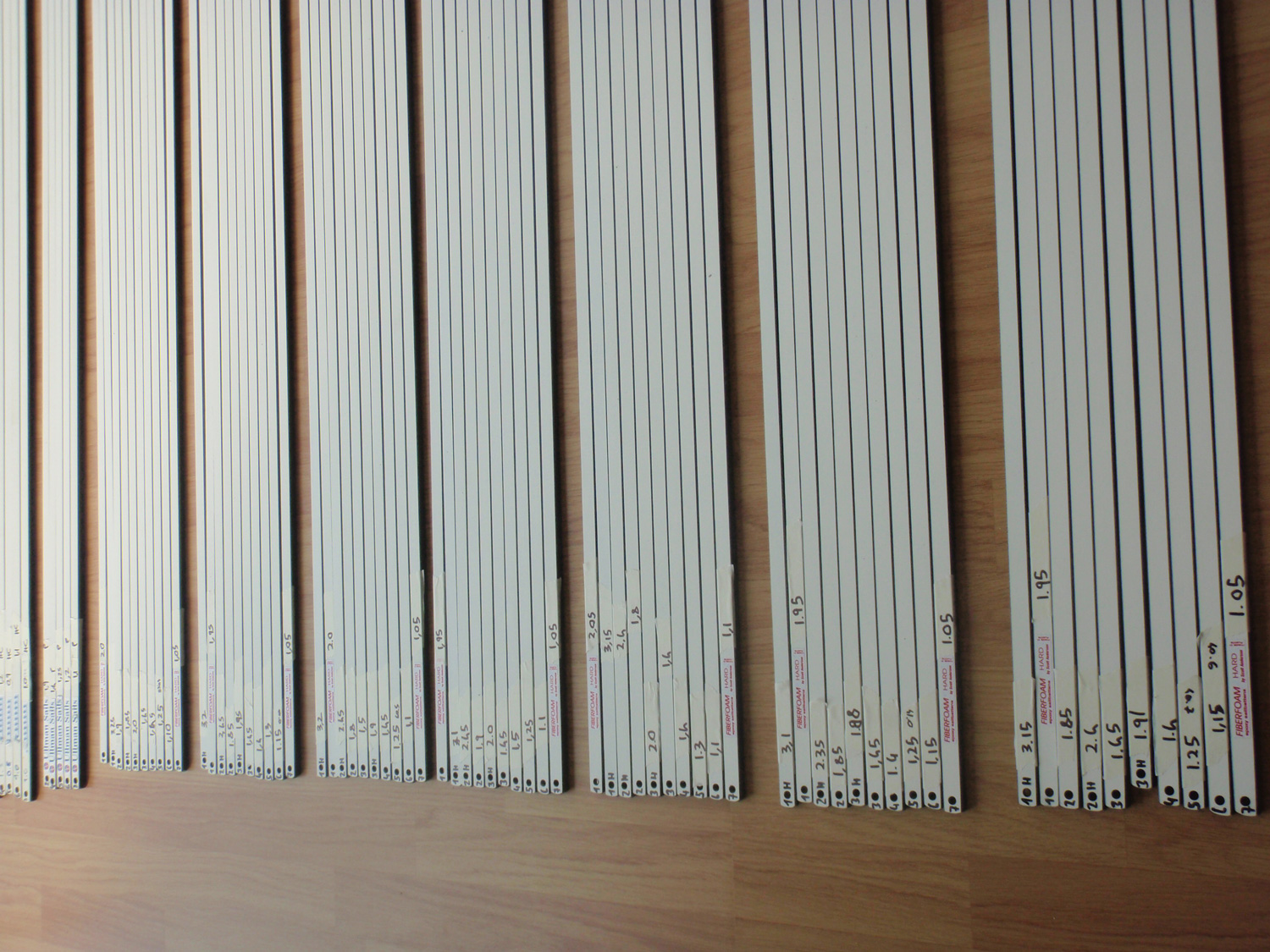Battens
Battens
This is a guide to battens by an expert sailmaker, Marton Balázs from One Design Sails.
Those who work with me, or whom I coached or just know me a little more, know that I am big fan of battens, and my passion is to look at the battens on a scientific way. I have seen several solutions for battens, with the explanation "It doesn't matter, it only has to prevent the leech from flapping". Battens are much more than a stick to put into the sail.
I'm talking now mainly about catamaran sails, but it applies to any full batten mainsails and jibs as well.
The battens main characteristics are the followings: length, stiffness, draft position/amount of tapering, and width/thickness that are in relation with the draft position and the stiffness.
Length: It is determined by the sail, no need to tell you about this too much. What is important is to have them cut to the right size. If they are too short, then it’s not able to tighten them the correct amount. If they are too long, they will create drag and could change the draft position of the sail.
Stiffness: This number comes from the width, the thickness, the amount of tapering and from the type of material is it made from. This is determined when the battens are produced. We can change this by cutting from the aft part of it, so more batten will remain from the tapered side, and the batten will be softer or by cutting from the front part and make it stiffer. Importantly, any way we cut it, the draft position will change. It can be measured with a scale, see the picture below. It is important to know where to stop with the pull or otherwise it can produce false data.
Draft position: There are two types of full battens. tapered and non-tapered. The non-tapered battens' draft position is always at 50%. With tapered battens, the draft position can be anywhere, even at 50% as well. You can find its position by bending it and if you put it on a tape, it’s easy to find draft's proper place and the battens can be compared.
Importance of the battens
The sails are sensitive to the battens. Each sails has an ideal set of battens which can give you the ideal/designed shaped. If you put in a totally different batten, it will distort the sail shape. I have seen many times, if the 5th-6th battens are missing, when merely a right length of batten is put in and it can kill the shape of the sail totally. This example shows how important it is to have the battens designed for the sail and they must also be in tune with each other, in draft position and in stiffness as well.
Measure them and put them into an excel chart. If they show a nice curve, they are great. At least for stiffness.
Distortion
There are some cases when you want to distort the shape. This can be when you want the top part of the sail flatter for higher winds. For this, the top battens need to be changed for stiffer ones, but they have to be in tune with the lower ones. The other case can be the following: we have a mainsail for a given class, which is very, very powerful between 8-14kts, but too full below and above that conditions and for flatter water. In this sail we use a stiffer batten set with an extremely stiff rear part, which helps to flatten out the sail, moves the draft position more aft and flattens out the exit angles.
For some classes like the F16, F18, Tornado, and even for the A-cat, we provide the extra battens as heavier or softer options for a given wind range and it is in our tuning guide as to which set we use.
It could be too much work to change the battens between sailing sessions or even between races, but if you know when to use which ones, it can give you extra speed, power, and better handling of the sail
Setting up the battens.
This is as important as the previous items. If the battens are too loose, they cannot transfer their properties to the sail, which will cause wrinkles, distortion and too much drag. If it is too tight, again, distortion, the battens cannot flip at a tack or a gybe, or even can invert during sailing.
The wrinkles are our indicators in this case. Tighten the battens until there are no wrinkles on the batten pockets when sailing. In time you will find a routine for which conditions how much tension is needed. This can be an exception when you need overtightened battens of course.
Batten care.
Avoid slapping your battens to hard objects, especially if they are carbon and/or composite. The battens do not to be kept tighten all the time. Loosen them after sailing and they can be reset before the next session for the new sailing conditions. Be careful when you roll up the sail. For the sail, it is the best if you roll it from the top. It is a not good idea to put No.1 batten into the No.2 pocket either as this can make the second batten pocket more loose. When rolling up, be careful to roll it to the leech. It prevents twisting the battens by the roll. The best way is if you take all of them out and store in an batten holder.
Our team, and myself, use a special batten holder where have all the sets for different conditions and a guide as to know, without thinking, which one to use. We always identify each batten, with its stiffness, draft position and which belongs to which set.
This is a quick and rough guide to battens, there could be many more hours of talking! If you have any further questions, just email me for sails@onedesignsails.com or give me a call.
I hope this helped. Thanks, Marton Balázs




